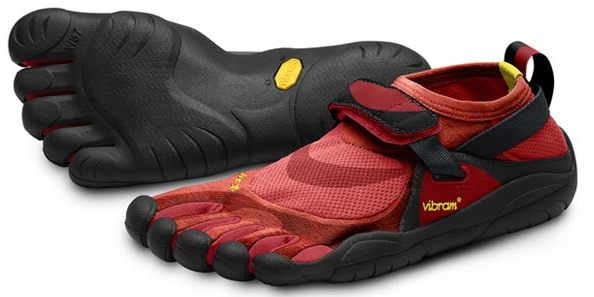I don't know Ivo or Greg but they are so far off base that I would ignore them. Vibram Five fingers are made to run on ANY surface. It has nothing to do with running style, cement, etc.
It forces you to change the way you run to a more natural manner. If you are a heel striker...you will soon quit that. The Bikala is just fine for distance running. Some folks can't adjust to running barefoot. However, a pediatrist friend of mine who runs in half and full marathons cut a section of Dr. Scholls gel pad and glued it in the shoe for the forefoot when he developed a blister and swears by it. Once your feet toughen up, the cement won't be an issue.
It took me about a month. I'm a Clydsdale distance runner and wouldn't switch to a regular shoe for anything.


